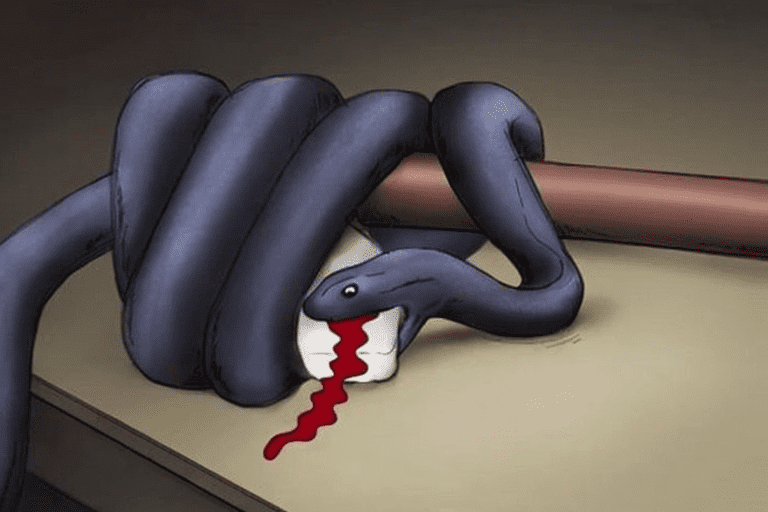
corner to another, searching for prey. As it explored the workshop, the carpenter’s wife, who was unaware of the intruder, entered to grab something she needed. Startled, she stumbled upon the cobra, freezing in fear.
The snake, sensing the woman’s presence, raised its hood, ready to strike. However, instead of attacking, the cobra simply stared at her. Astonishingly, the woman felt a strange connection with the serpent, an inexplicable understanding that they were both creatures simply seeking sustenance and survival.
Rather than screaming or panicking, the woman slowly backed away, giving the cobra enough space to retreat peacefully. The snake, seemingly acknowledging her non-threatening demeanor, gracefully slithered away, disappearing into the surrounding wilderness.
Curious about the snake’s sudden departure, the woman shared the encounter with her husband. Concerned, the carpenter realized the danger that had lurked in his workshop. Intrigued by the strange turn of events, he decided to investigate further, wondering if there was a way to coexist with the creatures that shared the environment.
The carpenter, a man of both skill and compassion, decided to transform a corner of his workshop into a safe space for the local wildlife. He researched non-lethal methods to deter potentially harmful creatures while preserving the ecosystem. Gradually, he created an environment where both humans and animals could coexist harmoniously.
He installed mesh screens, removed potential hiding spots, and introduced natural deterrents to keep dangerous creatures at bay without causing them harm. His workshop became a sanctuary, not just for his work but also for the diverse wildlife that inhabited the surrounding area.
Word of the carpenter’s innovative approach spread throughout the community. Conservationists, impressed by his efforts, partnered with him to implement similar practices in other workshops and homes. Together, they initiated a movement that emphasized the importance of cohabitation and the preservation of local ecosystems.
As the carpenter’s story gained traction, it reached the ears of a renowned wildlife photographer. Intrigued by the concept of a sanctuary within an urban environment, the photographer decided to document the unique relationship between humans and wildlife in the carpenter’s workshop. The resulting photo series became an international sensation, illustrating the possibilities of coexistence in the midst of our daily lives.
Inspired by the success of the carpenter’s initiative, neighboring communities embraced the idea of creating safe spaces for wildlife. Local authorities implemented guidelines for responsible urban development, encouraging citizens to consider the impact on biodiversity. The movement sparked a shift in perspective, highlighting the interconnectedness of human and animal habitats.
In recognition of his pioneering efforts, the carpenter received awards for environmental stewardship. His workshop became a model for sustainable living, attracting visitors and researchers eager to understand the principles behind this unique coexistence. The carpenter, once known for his woodworking skills, had inadvertently become a symbol of harmony between humanity and nature.
The impact of the carpenter’s story extended beyond his community. Educational institutions incorporated his case into their curricula, teaching students about the importance of respecting and preserving the environment. The ripple effect of his actions reached global proportions, inspiring a new generation to prioritize coexistence over dominance.
In the end, the carpenter’s simple act of creating a sanctuary in his workshop had profound implications. It demonstrated that even in the midst of urban life, there is room for harmony with the natural world. The story of the carpenter and the cobra became a parable for a society capable of fostering understanding, empathy, and coexistence with the creatures that share our planet.








Leave a Comment